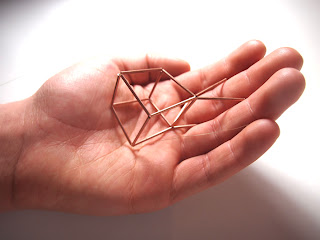http://www.eastanglianlife.org.uk/visit-us/future-exhibitions.html
Tuesday 30 April 2013
webpresenceatMEAL
web presence established at MEAL - the site now has a link to this blog
http://www.eastanglianlife.org.uk/visit-us/future-exhibitions.html
http://www.eastanglianlife.org.uk/visit-us/future-exhibitions.html
Friday 26 April 2013
aweekofwriting
a week of writing - the editioned book is coming along - I'm especially excited as Victoria Mitchell has agreed to write a piece for it. http://www.nua.ac.uk/research/supervisors/victoriamitchell
first page ......
first page ......
Is smocking1 inherently evil? 2
The activity itself has political overtones – workers clothes and busy hands,
alongside the idea of the hidden and revelation through the process of creating
folds. 3
------------------------------------------------------------------
1 - Smocking is an embroidery technique made by gathering cloth in regularly
spaced tucks, providing flexibility and form within a garment. The word smock,
derived from smock – a farmer’s work shirt is a modern spelling of an Old
English word "smocc" a verb meaning to gather fabric into unpressed
pleats by sewing in a honeycomb pattern. Eventually the word was used to refer
to both the sewing technique and the garments it produced.
Fry, Gladys Windsor. 1946 Embroidery and
Needlework. Pitman & Sons Ltd.
Every kind of smocking. 1985 (ed) Kit Pyman. Search
press.
2 - starting point for the project - Sitting in a restaurant, heatedly
discussing the role and presentation of folding and smocking within the clothes
represented in the paintings in the Academia in Venice. The individuals in the
paintings wearing smocked or folded garments appeared to have poor character
qualities, to be hiding notes, from a lower order etc. The activity itself has
political overtones – smocking – predominantly an activity undertaken by farm
workers to embellish their clothes, the idea of busy hands; subjugation through
craft, alongside the idea of the hidden through the process of creating folds.
It culminated in the question, was smocking inherently evil? This conversation
has developed over 2 years, starting off with a small body of bookworks
influenced by some of the smocking structures for a touring exhibition
organised by the Irish Crafts Council. This was almost subconscious but later a
show titled bookmare at Camberwell College of Art and the repeat show at
Norwich University College consciously started the process of exploring
smocking through the objects I make. A TESS funding application at what was
Norwich University College of the Arts led to a body of work shown at the Imago
gallery in London. A lot of meetings and conversations led me to some
really excellent people to work with within some interesting collections and
archives in East Anglia. This enabled a successful bid to the Arts Council to
spend a year working on the idea with a number of partners.
3 - “Folding-unfolding no longer simply means tension-release,
contraction-dilation, but enveloping developing, involution-evolution… The
simplest way of stating the point is by saying that to unfold is to increase,
to grow; whereas to fold is to diminish, to reduce, to withdraw into the
recesses of a world”.
Deleuze, Gilles. “The Fold-Leibniz and the Baroque: The Pleats of Matter.”
Architectural Design Profile No.102:
Monday 22 April 2013
howigotfromonethingtoanothertoanothertoanother.
the mindmap is completed and ready to be printed- I see it editioned, folded and inserted into the limited edition book created as a manual of the project. The print attempts to map the thinking within the project - how i got from one thing to another to another to another.
Sunday 14 April 2013
Friday 12 April 2013
workingthroughwork
one really positive aspect of this
project has been to work in new ways - examining an established
working practice is always positive in the life of an artist, throwing up new
issues and ideas to consider. Learning from making, attempting to make work
that has no definite ending in terms of what it should be or even look like and
to embark on new ways of making is exciting, although a little worrying – a
good state to be.
an example has been a piece of work that has
turned into a ‘quilt – type’ object. Starting off as the interesting material
left after sublimation printing – which was then folded – joined together as
one length – folded pieces of tracing paper were attached as if sections in a
book onto the length – folded into 4 as if a map - tracing paper ripped out
(leaving small elements as traces) – pleats added – length folded into a
bookwork – abandoned - cut into squares – some elements turned to view the back
– all elements joined to make a quilt – finished.
Friday 5 April 2013
foldinglight
The experimenting with folding using the clear plastic that
documents within archives are stored - in an attempt to work with just the fold
– creating structure with light and reflection.
Thursday 4 April 2013
slideshowjuxtapositions
Working on the slide show – building a collection of
juxtaposed images that illustrate the connections
Tuesday 2 April 2013
foldinglines
The work is really
spinning along – with several strands of the project on the go at once. The physical
making is now looking at folding in a rather oblique way – using wire and
plastic to explore just the fold itself – edges holding voids leaving just a
handful of lines. The visual connections within the slide show have resulted in
hours of Photoshop madness but there are some startling images coming from the
files. The writing has started to look at categorization and taxonomy as a way
of making sense of entry points to collections. All this stuff – Archiving the Artist
edited by Vaknin, Stuckey and Lane has some useful points of reference regarding
navigating an archive.
Subscribe to:
Posts (Atom)












